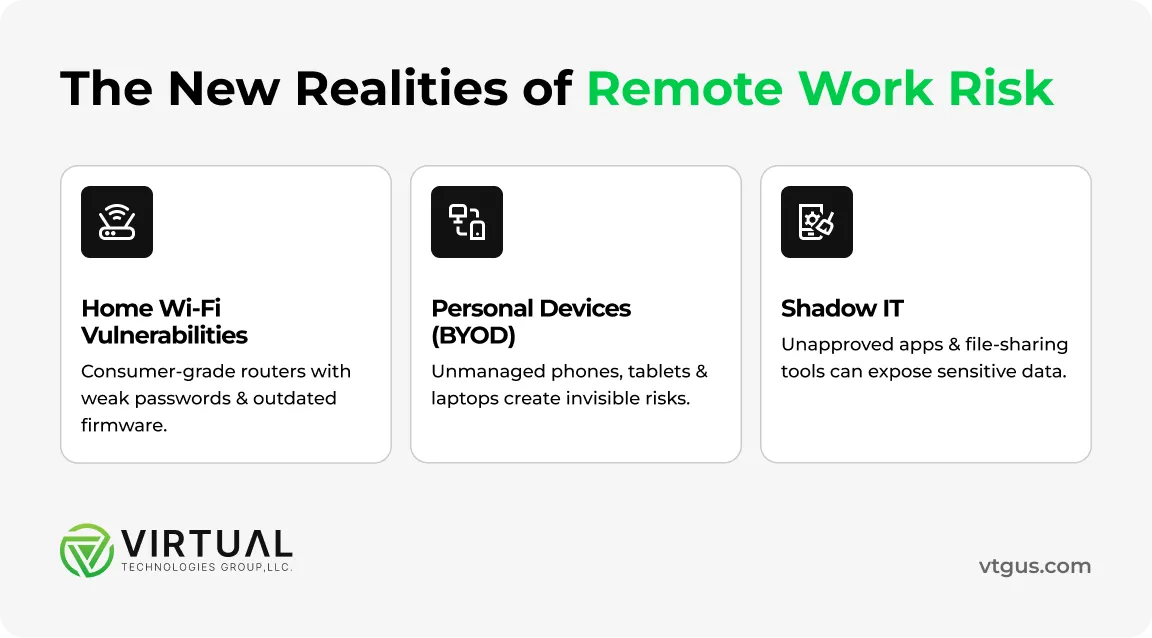The Hidden Cyber Risks of Hybrid & Remote Work

Introduction
Hybrid and remote work have unlocked flexibility and productivity — but they have also created new cybersecurity risks. From unsecured home Wi-Fi networks to personal devices and shadow IT, businesses now face an expanded attack surface that requires new approaches to protection.
The New Realities of Remote Work Risk
- Home Wi-Fi vulnerabilities: Many employees rely on consumer-grade routers with weak passwords and outdated firmware.
- Personal devices (BYOD): Phones, tablets, and laptops not managed by IT create invisible risks.
- Shadow IT: Cloud apps and file-sharing tools adopted without IT approval can expose sensitive data.
Balancing Productivity with Security
Companies do not have to sacrifice flexibility for safety. The most successful hybrid work models combine smart policies with modern IT security solutions:
- VPNs and Endpoint Protection: Ensure all remote devices access corporate data securely.
- Regular Updates and Patch Management: Protect against known exploits.
- Employee Training: Build awareness of phishing and social engineering tactics.

Real-World Example: Small Business Internet Security
Small businesses are especially vulnerable. Studies show that 43% of cyberattacks target small businesses, often due to weak or non-existent internet security policies. The cost of an incident can be devastating, both financially and reputationally.
VTG’s Role
At VTG, we help organizations design secure hybrid environments with:
- Proactive monitoring
- Endpoint security
- Ongoing employee training
Don’t let flexibility put your business at risk.
Contact VTG today to fortify your remote workforce.
Subscribe to our newsletter
Bring your skills, your passion, and your goals - we’ll provide the platform to thrive.






